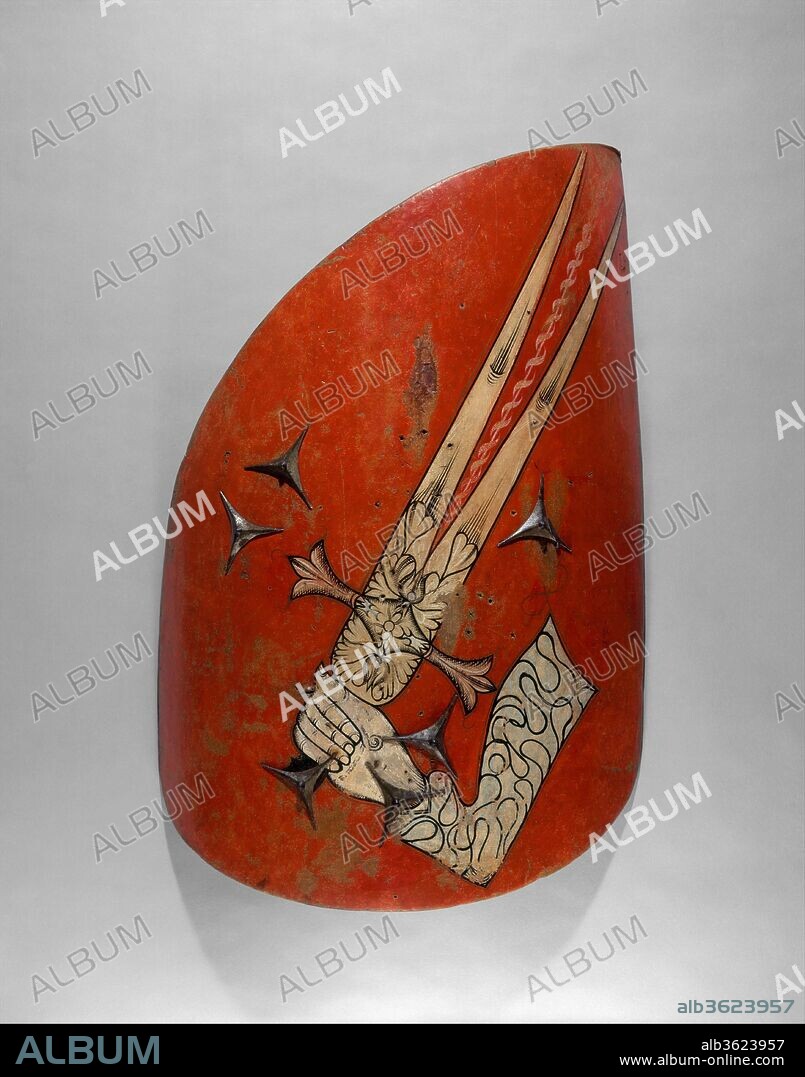alb3623957
Three Hungarian-Style Shields

|
Ajouter à une autre Lightbox |
|
Ajouter à une autre Lightbox |



Avez-vous déjà un compte? S'identifier
Vous n'avez pas de compte ? S'inscrire
Acheter cette image.
Sélectionnez l'usage:

Titre:
Three Hungarian-Style Shields
Légende:
Voir la traduction automatique
Three Hungarian-Style Shields. Culture: Eastern European. Dimensions: 42.50.29: H. 50 in. (127 cm); W. 20 in. (50.8 cm); 42.50.30: H. 45 in. (114.3 cm); W. 25 in. (63.5 cm); 49.57.1: H. 32 1/2 in. (82.55 cm); W. 21 5/8 in. (54.91 cm). Date: ca. 1500-1550.
These wing-shaped shields, with the distinctive upward-sweeping back edge, were the characteristic light-cavalry shields of Hungary. During the sixteenth century, the style was adopted across much of eastern Europe by both Christian and Islamic horsemen. The shield's elongated upper edge was designed to defend the back of the head and neck against cuts from a saber, the preferred cavalry weapon in that region.
The shield on the right is painted on its exterior with the double-bladed sword of the prophet Muhammad and on its interior with the Crucifix and instruments of the Passion. This unusual mix of Islamic and Christian symbols suggests that the shield was used in a tournament by a Christian warrior dressed in Muslim fashion. In these "Hungarian style" tournaments, the participants wore Hungarian and Turkish costumes and used sabers to strike off feathers attached to their opponents' helmets and to the apex of their painted shields. Even at a time when Turkish armies were a constant threat to eastern Europe, their costumes and tactics were imitated by their foes.
Technique/matériel:
Wood, leather, gesso, polychromy
Musée:
Metropolitan Museum of Art, New York, USA
Emplacement:
EUROPE (CONTINENT)
Crédit:
Album / Metropolitan Museum of Art, NY
Autorisations:
Modèle: Non - Propriété: Non
Questions sur les droits?
Questions sur les droits?
Taille de l'image:
3219 x 4094 px | 37.7 MB
Taille d'impression:
27.3 x 34.7 cm | 10.7 x 13.6 in (300 dpi)
Mots clés:
 Pinterest
Pinterest Twitter
Twitter Facebook
Facebook Copier le lien
Copier le lien Email
Email
